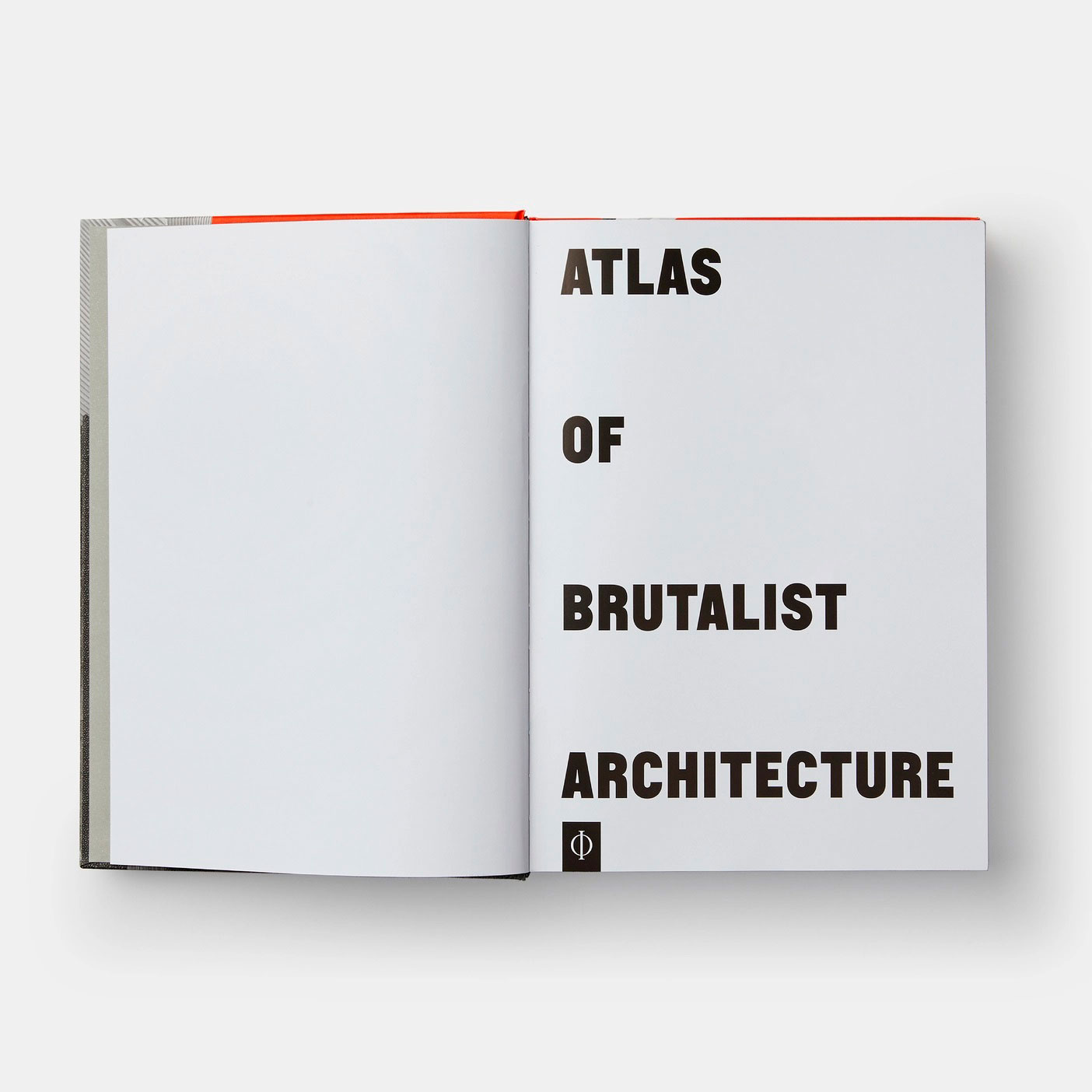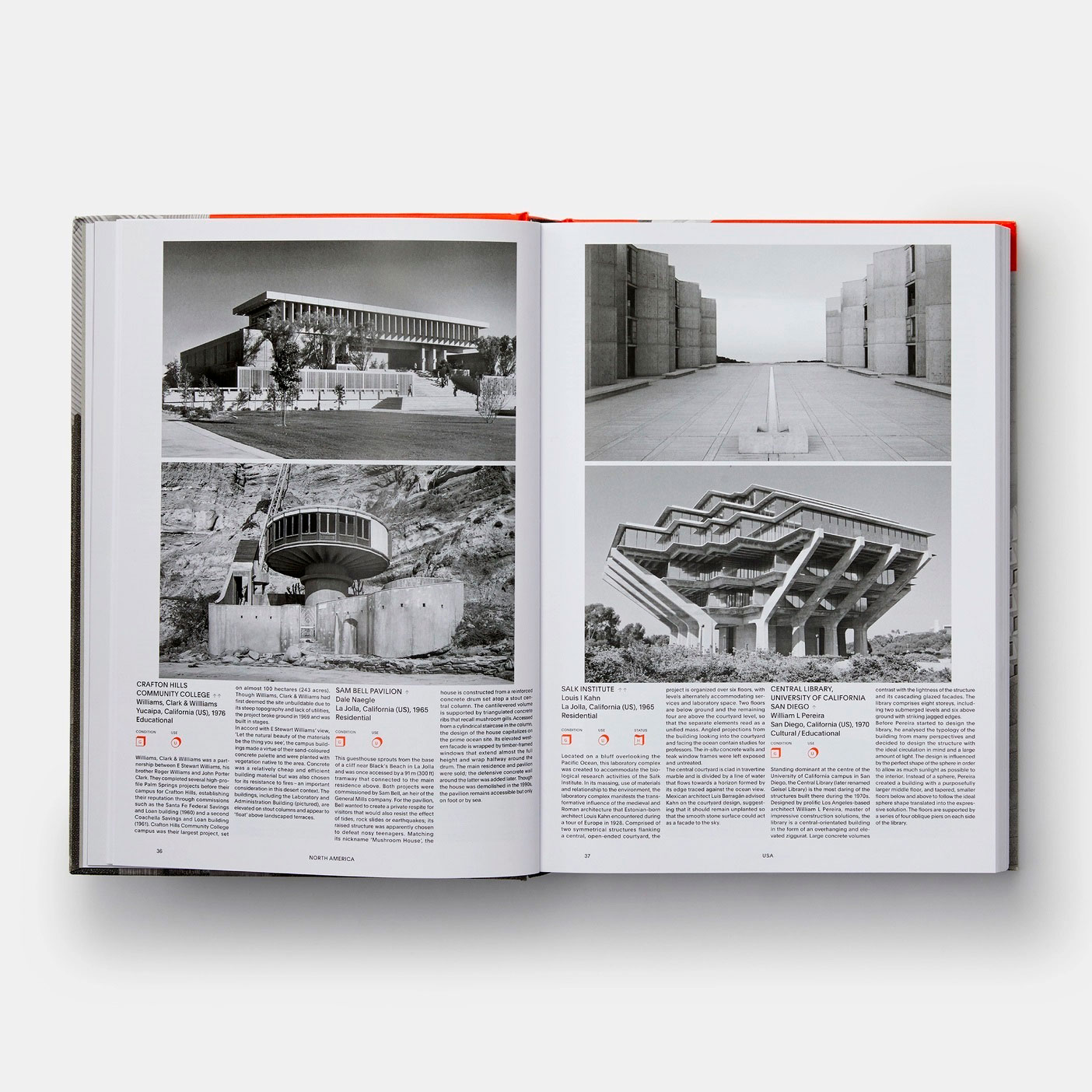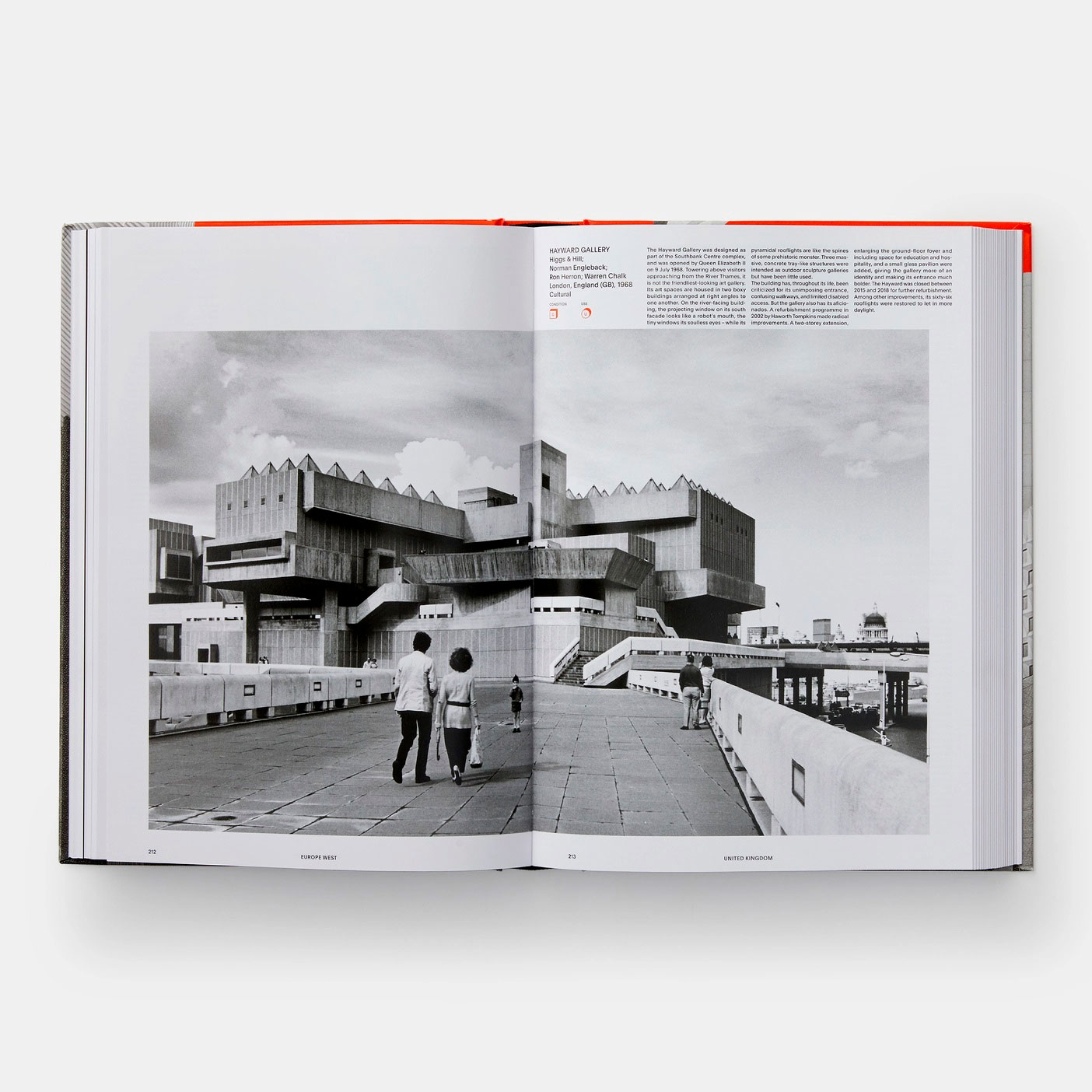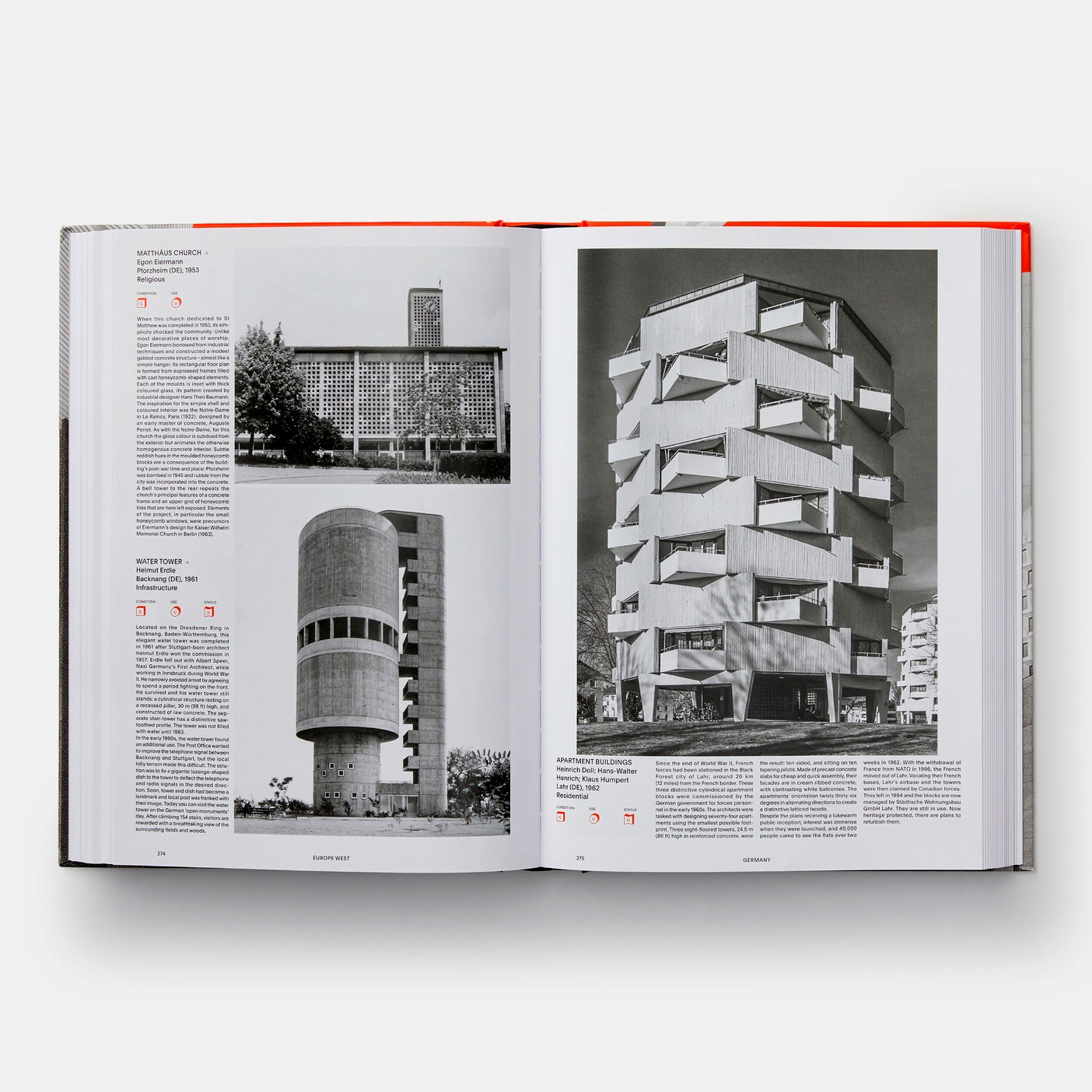BOOK:Atlas of Brutalist Architecture, Phaidon Publications
 Brutalism, also known as Brutalist architecture, is a style that emerged in the 1950s and grew out of the early-20th century modernist movement. Brutalist buildings are characterised by their massive, monolithic and blocky appearance with a rigid geometric style and large-scale use of poured concrete. The movement began to decline in the 1970s, having been much criticised for being unwelcoming and inhuman. The Brutalist aesthetic is enjoying a renaissance – and the book “Atlas of Brutalist Architecture by Phaidon Publications documents Brutalism as never before. In the most wide-ranging investigation ever undertaken into one of architecture’s most powerful movements, more than 850 Brutalist buildings – existing and demolished, classic and contemporary – are organized geographically into nine continental regions. Much-loved masterpieces in the UK and USA sit alongside lesser-known examples in Europe, Asia, Australia, and beyond – 102 countries in all, proving that Brutalism was, and continues to be, a truly international architectural phenomenon. Includes 20th Century masters such as: Marcel Breuer, Lina Bo Bardi, Le Corbusier, Carlo Scarpa, Ernö Goldfinger, Frank Lloyd Wright, Louis Kahn, and Paul Rudolph. Contemporary architects featured include Alvaro Siza, Coop Himmelb(l)au, David Chipperfield, Herzog & de Meuron, Jean Nouvel, SANAA, OMA, Renzo Piano, Tadao Ando, and Zaha Hadid. -Efi Michalarou
Brutalism, also known as Brutalist architecture, is a style that emerged in the 1950s and grew out of the early-20th century modernist movement. Brutalist buildings are characterised by their massive, monolithic and blocky appearance with a rigid geometric style and large-scale use of poured concrete. The movement began to decline in the 1970s, having been much criticised for being unwelcoming and inhuman. The Brutalist aesthetic is enjoying a renaissance – and the book “Atlas of Brutalist Architecture by Phaidon Publications documents Brutalism as never before. In the most wide-ranging investigation ever undertaken into one of architecture’s most powerful movements, more than 850 Brutalist buildings – existing and demolished, classic and contemporary – are organized geographically into nine continental regions. Much-loved masterpieces in the UK and USA sit alongside lesser-known examples in Europe, Asia, Australia, and beyond – 102 countries in all, proving that Brutalism was, and continues to be, a truly international architectural phenomenon. Includes 20th Century masters such as: Marcel Breuer, Lina Bo Bardi, Le Corbusier, Carlo Scarpa, Ernö Goldfinger, Frank Lloyd Wright, Louis Kahn, and Paul Rudolph. Contemporary architects featured include Alvaro Siza, Coop Himmelb(l)au, David Chipperfield, Herzog & de Meuron, Jean Nouvel, SANAA, OMA, Renzo Piano, Tadao Ando, and Zaha Hadid. -Efi Michalarou




